Why Write a Cover Letter Without a Name?
In today’s job market, where privacy and fairness are increasingly valued, the practice of writing a cover letter without your name is becoming more relevant. Removing your name from a cover letter can be a strategic move for several compelling reasons. Firstly, it helps to reduce unconscious bias during the initial screening process. Recruiters, often unintentionally, may form judgments based on a candidate’s name, leading to unfair advantages or disadvantages. By omitting the name, you shift the focus solely to your qualifications, skills, and experiences. This allows your abilities to speak for themselves, fostering a more equitable evaluation. Moreover, in certain situations, such as when applying for jobs with companies committed to diversity and inclusion, name-free cover letters align with their values and demonstrate your understanding of their principles. It sends a signal that you prioritize merit over other potentially irrelevant factors. Another advantage of writing a cover letter without a name is in specific industries or countries where anonymity is a standard part of the application procedure. This approach might be common in roles where your identity is kept confidential. Finally, it can offer a degree of protection, especially in situations where you are concerned about potential privacy breaches or identity theft. It’s a way to safeguard your personal information while still making a professional introduction.
Legal and Privacy Considerations
When deciding to exclude your name from a cover letter, it’s essential to consider the legal and privacy aspects. Different regions and countries have various laws related to data protection and fair hiring practices. It’s important to be aware of and comply with these regulations. For instance, data protection laws, like GDPR in Europe, mandate how personal information is collected, stored, and used, which has implications for recruitment practices. The intention behind writing a name-free cover letter often aligns with privacy principles. However, ensuring that your application adheres to applicable laws is crucial. You should examine the specific requirements of the jurisdiction where you are applying for a job. If you are uncertain, consult with legal resources or professional career advisors who are familiar with these areas. Additionally, be aware of any company policies regarding anonymous applications. Some organizations may have specific guidelines on whether to include your name or how to format your contact information. Ignoring these can lead to your application being rejected. In any application, maintaining the integrity of your personal information and respecting the legal frameworks in place protects you and your career goals.
Understanding Blind Applications
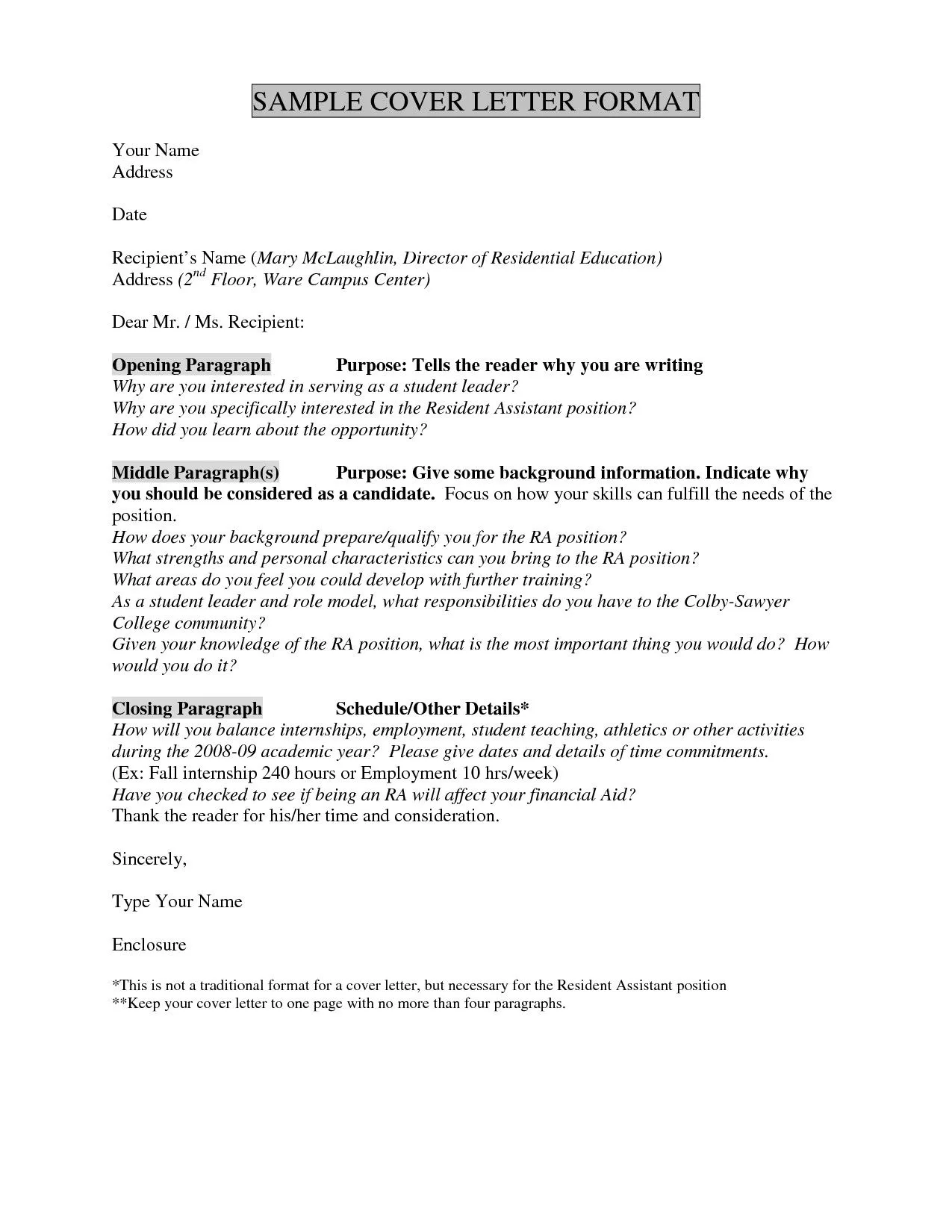
Blind applications are becoming a norm in several industries, and understanding them is key when planning your cover letter strategy. In essence, a blind application process refers to recruitment methods designed to remove personal identifiers, such as names, age, gender, and sometimes even education institution names, from initial screening stages. The main goal is to eliminate bias and allow recruiters to evaluate candidates based solely on their skills, qualifications, and work history. This approach promotes fairness and diversity in hiring. When you submit a cover letter without your name as part of a blind application, you’re essentially contributing to this objective. This could be either because the employer explicitly asks for it, or because you anticipate it’s part of the process. Knowing this is crucial for structuring your letter. For instance, you might need to emphasize certain parts of your work experience to stand out from other applicants. You might also need to re-evaluate how you give your contact information. Because the absence of personal details might affect how they’ll reach you if they are interested. Recognizing the context of a blind application helps you tailor your cover letter to be as effective as possible, ensuring you are evaluated on your merits without being affected by unconscious bias.
When to Use a Name-Free Cover Letter
The decision of when to write a cover letter without your name depends on various factors. Start by assessing the job requirements and the company culture. If the job advertisement explicitly asks for an anonymous application, then this is clearly an indication. Follow the directions provided. If there is no mention of it in the job description but the company emphasizes diversity and inclusion, writing a name-free cover letter might be appropriate. In industries known for their focus on fairness and blind assessment, such as government or certain public sector roles, removing your name could be a smart move. Also, consider the potential for bias. If your name or personal background could lead to unfair assumptions, omitting your name may give you a better chance of being assessed fairly. However, if the job application process seems conventional and does not show specific requirements, you may not need a name-free cover letter. In such cases, follow the standard protocols, as excluding your name may appear odd. If in doubt, you can also research the company’s hiring practices or contact their HR department to clarify their policies on anonymous applications.
Formatting Your Name-Free Cover Letter
The formatting of your cover letter is crucial when you are omitting your name. It’s essential to make sure your document is professional and easy to read, whilst giving necessary information. You must start by removing your name from the heading. In its place, include your contact information, such as your phone number, email address, and your LinkedIn profile or online portfolio link. You should then use a formal and clear font, like Times New Roman, Arial, or Calibri, with a font size of 11 or 12 points. Ensure your letter has clear spacing between paragraphs and sections to improve readability. Avoid using the traditional salutation “Dear [Hiring Manager’s name]” as this is impossible. Instead, opt for neutral salutations like “Dear Hiring Team,” “Dear [Company Name] Team,” or “To Whom It May Concern,” as it allows for a welcoming approach. To ensure the letter remains professional, stick to a formal business letter format, with consistent alignment and clear sections. Using a letter template will give you a professional start, and make sure you have all the necessary information. Finally, always review your cover letter to ensure there are no grammatical errors or formatting inconsistencies. A well-formatted cover letter creates a good impression and emphasizes your focus on professionalism and attention to detail.
Contact Information Alternatives
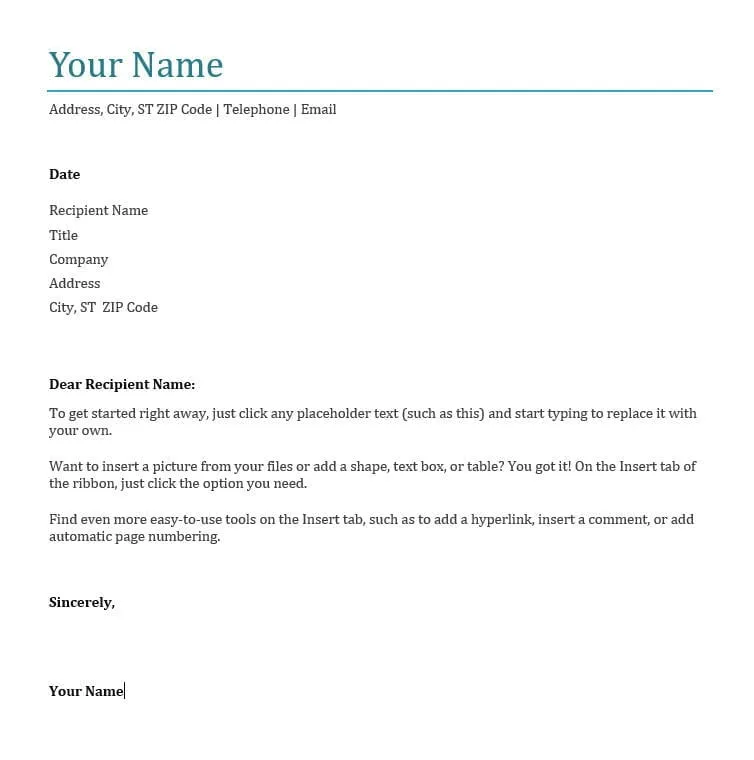
When writing a cover letter without your name, deciding how to provide your contact information is crucial. Since your name is not included in the heading, provide your contact details directly beneath your greeting, or at the end of your letter. This gives the hiring manager quick access to contact you if they are interested. Make sure to include your phone number and email address. These are the easiest and most common ways of communication. Adding a professional email address is critical. It is suggested to have an email address dedicated for job applications, instead of your usual email. Include your LinkedIn profile URL or the link to your online portfolio, if applicable. These will help the recruiter to see your work and resume. Consider creating a unique, professional email signature that includes your name (if you want to use it), phone number, and link to your portfolio. While not including your name in the heading, you can provide it strategically within the signature at the end. Always verify that your contact information is current and accurate, as any errors can lead to missed opportunities. Finally, make sure your contact information appears professional and easy to read. A professional, easy-to-find and accurate contact information will help you move forward in the recruitment process.
Professional Salutations
Choosing the right salutation in your cover letter is important, especially when you’re omitting your name. Since you cannot use specific names, opt for professional and neutral salutations. These will allow you to give a welcoming greeting without giving personal details. Consider the following options “Dear Hiring Team” or “Dear Recruitment Team” - this option shows you are addressing the entire team of professionals and shows respect for them. If you know the specific department, you could use “Dear [Department Name] Hiring Manager,” or “Dear [Department Name] Team.” This is a way to show you have researched the company. Another option is “To Whom It May Concern,” this is a formal salutation that’s suitable if you have no specific contact details, or don’t know the name of the hiring manager. However, it might be seen as impersonal. Therefore, only use it when there are no other options. Avoid using outdated or overly casual greetings. Always keep a professional tone and make sure the chosen salutation fits with the tone of your cover letter and the culture of the company. By using a suitable salutation, you give a positive first impression and show that you are considerate.
Content Strategies for Name-Free Letters
The content of your name-free cover letter should focus on emphasizing your abilities and achievements. Since your name is missing, use this opportunity to shine the spotlight on your skills and expertise. Start by clearly stating the position you are applying for and how your skills align with the job requirements. In the main body of your letter, provide specific examples of your accomplishments, using the STAR method (Situation, Task, Action, Result) to describe each one. This method will allow you to show, not just tell, the value you bring to the role. Use action verbs to describe your responsibilities and accomplishments. Instead of saying “I was responsible for,” say “Managed,” “Developed,” or “Implemented.” Quantify your achievements whenever possible. This helps the recruiters to understand the value you bring. For example, instead of saying “Improved customer satisfaction,” you can say “Improved customer satisfaction by 15%.” Make sure your letter aligns with the job description. Tailor your skills and experiences to meet the requirements mentioned by the hiring manager. Proofread your letter carefully for any errors in grammar, spelling, and punctuation. Ensure it is concise, and easy to read. By highlighting your skills, experiences, and accomplishments, and tailoring your letter to the job description, you can grab the attention of the hiring manager and boost your chances of landing an interview.
Highlighting Skills and Experience
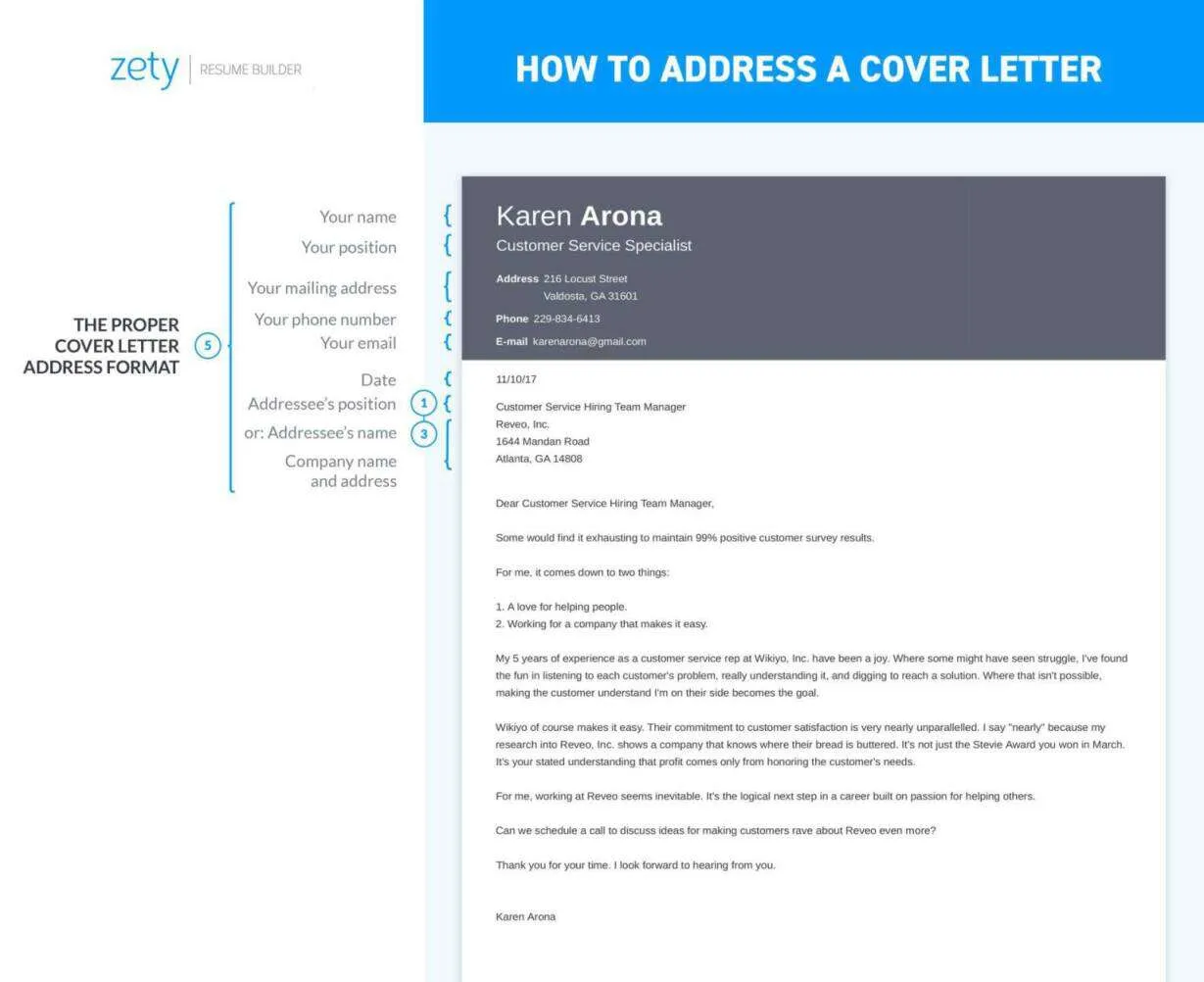
When composing a cover letter without your name, it’s especially important to emphasize your skills and work experience. As your name is missing, your skills and experience will be the main selling points. Begin by reviewing the job description and pinpointing the key requirements. Identify the skills and qualifications needed for the position. Then, in your cover letter, showcase how your skills match those requirements. To do this, first, list your key skills, both hard and soft skills. Hard skills are your technical abilities, such as programming languages or data analysis. Soft skills are your interpersonal abilities, such as communication, teamwork, and problem-solving. Make sure the skills you list relate to the job requirements. Next, provide specific examples of how you have used those skills in past work experience. This can be done by describing a project, a task, or an accomplishment where you used those skills. Use the STAR method (Situation, Task, Action, Result) to describe each example. By highlighting your skills and linking them to your work experience, you can show that you are a perfect fit for the role. Provide clear and concise examples that give specific details, not just a summary. This strategy shows the recruiter your experience and can help you move forward.
Emphasizing Accomplishments
In a cover letter without your name, emphasizing your accomplishments can be the best way to grab the attention of the recruiter. Since you are omitting your name, your achievements will speak for themselves. Start by identifying your key accomplishments from your work experience. These are the specific results you have achieved. When listing your accomplishments, use the STAR method (Situation, Task, Action, Result). This method helps structure your responses and provides more context. Describe the specific situation or problem. Explain the task or role. Outline the actions you took to solve it. Then, detail the results you achieved. Whenever possible, quantify your achievements with numbers and percentages. For instance, instead of saying “Increased sales,” say “Increased sales by 20% in one quarter.” This will show your potential to achieve results. Ensure your accomplishments are directly related to the requirements of the job. Showcase your past achievements to demonstrate that you can meet the challenges of the new role. By highlighting your accomplishments, you not only show your value but also make your application stand out. A cover letter that focuses on achievements leaves a lasting impression and increases your chances of getting an interview.
Tailoring to the Job Description
When creating a cover letter without your name, the main strategy is tailoring it to the job description. Take the time to carefully read the job description and understand the requirements. Highlight the key skills, qualifications, and experiences the employer is looking for. Customize your cover letter to match these needs. To do this, start by matching the language used in the job description. Incorporate the keywords and phrases into your cover letter to show you know the job. Then, focus on the sections of your resume that highlight your skills and experiences. Provide specific examples of how you have used these skills to achieve your accomplishments. By reviewing the job description, you can create a cover letter that fits the company. Tailor the language and structure of your letter to show you understand the job and are qualified for it. Customize your cover letter to emphasize the most important qualifications the employer is looking for. This approach improves your chances of getting an interview. Tailoring your cover letter to the job description shows your attention to detail, your interest in the role, and your understanding of the organization.
Review and Proofreading Your Letter
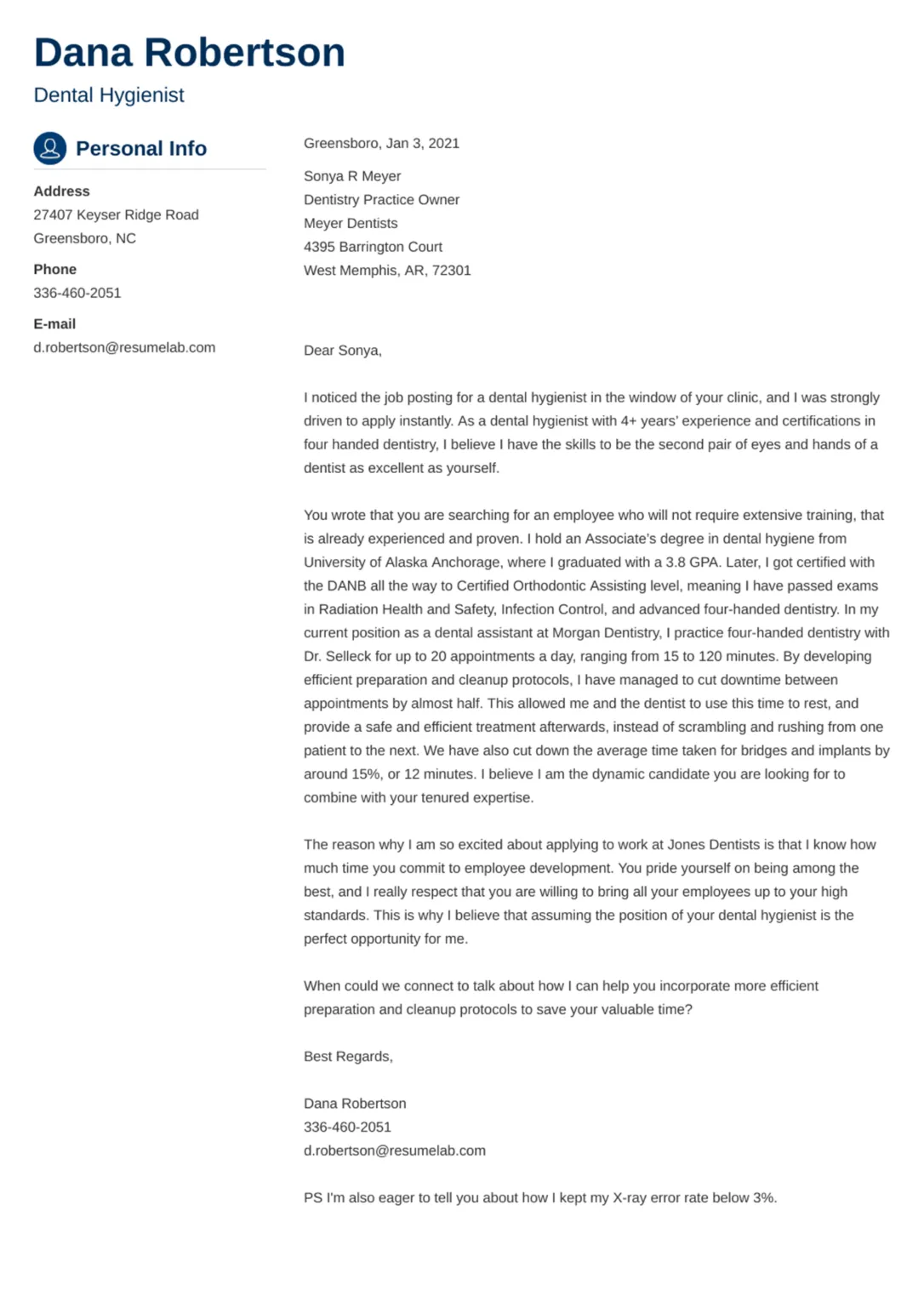
Before submitting your cover letter without your name, it’s critical to carefully review and proofread it. Even the smallest errors in grammar, spelling, or formatting can negatively impact your application. Start by reading through your cover letter multiple times. Focus on different aspects of your document each time. Check for grammatical errors such as sentence structure, verb tense, and subject-verb agreement. Ensure that all your punctuation is correct. Look for spelling mistakes and make sure all your words are written correctly. Then, review the formatting of your cover letter. Ensure that the text is clear, and easy to read. Verify that your contact information is correct. Ensure your cover letter includes all necessary details. Use a grammar checker and a spell checker to catch any errors. Use multiple tools to ensure any errors are identified. Consider having someone else review your cover letter. Asking a friend, family member, or career advisor to review your letter can help you catch mistakes you might have missed. Make sure your cover letter is concise and to the point. Remove any unnecessary information. By carefully reviewing and proofreading your cover letter, you show your attention to detail and professionalism. This is essential for making a great first impression and improving your chances of getting an interview.
Common Mistakes to Avoid
When writing a cover letter without your name, there are many common mistakes to avoid. The most important is to ignore the instructions. When the employer asks for your name, you should not remove it. This would indicate that you cannot follow instructions. Make sure all of your personal contact details are up to date. Contacting you will be difficult if any information is missing or wrong. Another mistake is to use a generic cover letter that isn’t targeted to the job. Always tailor your letter to each job application. Include irrelevant information. Stay on topic and focus on your skills and achievements. Don’t use overly casual language or slang. Maintain a professional tone throughout your letter. Never use more than one page in your cover letter. Keep it concise. Avoid providing more information than necessary. Review your cover letter to make sure that you don’t make any grammatical errors. Always proofread your cover letter carefully. Finally, never lie or exaggerate your achievements. Dishonesty will damage your credibility. Avoiding these common mistakes can significantly boost your chances of making a good impression. A well-written cover letter shows that you are professional, detail-oriented, and a good fit for the role.
Benefits and Drawbacks
Deciding to write a cover letter without your name has both benefits and drawbacks. The key advantage is to reduce unconscious bias, which can help to ensure a fairer evaluation process. This increases your chances of getting hired based on your skills and experiences rather than on your name. By omitting your name, you may also protect your privacy. This is especially useful if you have concerns about identity theft or data breaches. However, there are disadvantages to consider. The main drawback is that it might not be the norm. Some companies might be confused or unsure how to treat your application. This could lead to your application being rejected or overlooked. Another potential downside is that it can be challenging to make a strong personal connection with the hiring manager. If the employer has asked for your name, and you haven’t provided it, the recruitment team may feel there is something missing. Before using a name-free cover letter, review the company’s culture and expectations. Consider the industry standards and your personal privacy concerns. Weighing the benefits and drawbacks can help you make an informed decision about whether to use a name-free cover letter.
Alternatives to Name Removal
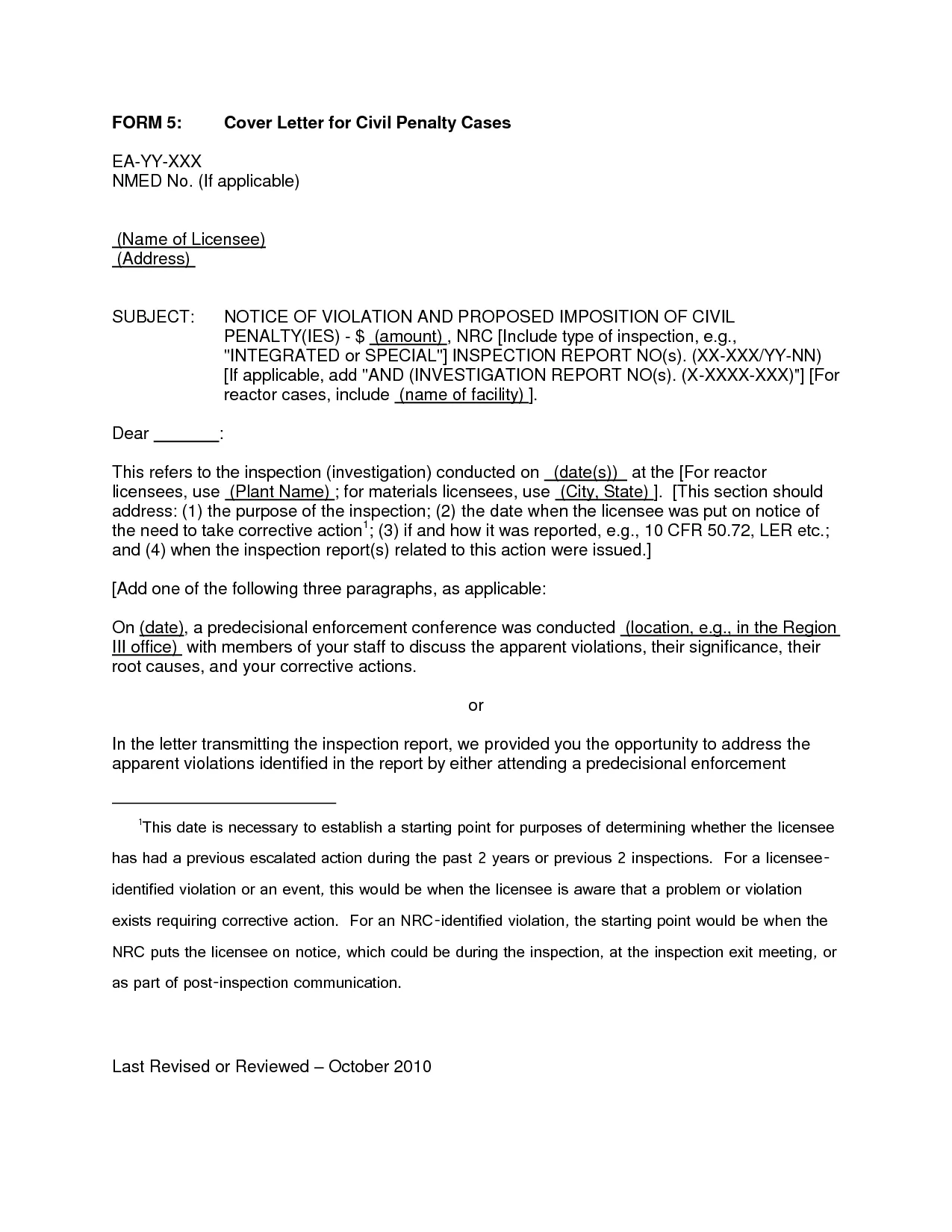
When you’re considering omitting your name, there are other ways to safeguard your personal information or reduce bias in the application process. One alternative is to use a professional-sounding email address. Creating a dedicated email address for job applications will keep your personal email address separate. Another strategy is to control the information you share on your resume and cover letter. Share only the necessary details. Ensure that you are not including personal information that is not relevant to the job requirements. Instead of omitting your name, you can use a neutral salutation like “Dear Hiring Team” or “To Whom It May Concern.” This is useful when you don’t know the hiring manager’s name. You can also limit the amount of information you share about your previous employers or educational institutions, particularly if you think this could result in bias. However, it is crucial to still follow the company’s specific guidelines, as this may impact your application. Consider these alternatives to determine which strategy best matches your needs and goals for your job application. Choosing the correct method allows you to protect your privacy and boost your chances of a fair assessment.
Best Practices for Follow-Up
After you’ve submitted your cover letter without your name, effective follow-up is crucial to keep the hiring process moving. Begin by sending a follow-up email about a week or two after submitting your application. This allows enough time for the hiring team to review your application. In your follow-up email, make sure to refer to the job position and show your interest in the role. If you have additional information to share, include it. For example, you could include an updated portfolio or the links to any relevant projects. Keep your follow-up email brief and professional. Do not include any unnecessary details. Show you are very interested in the position. If you are contacted for an interview, make sure you prepare and follow up with a thank-you note. If you haven’t received a response after your initial follow-up, you can send a second follow-up email after a further period of time. However, keep it professional and show continued interest. If possible, tailor your follow-up to the company’s culture. Review the company’s website. By using these follow-up best practices, you can ensure your application is seen. These strategies show your commitment, increase your chances of moving forward in the hiring process, and secure your next job.
